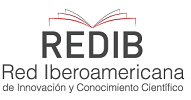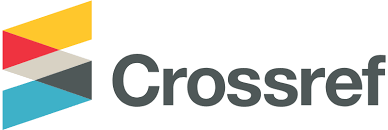Tarea de clasificación: Un método sencillo y de bajo costo para diseñar estrategias de neuromarketing de productos alimenticios
DOI:
https://doi.org/10.46363/jnph.v3i2b.2Resumen
Tarea de clasificación es un método sencillo y de bajo costo, en comparación a los métodos tradicionales, y que su popularidad ha crecido en los últimos 10 años. Tarea de clasificación es un método determinante para elaborar estrategias de neuromarketing. El método permite conocer las similitudes o diferencias de los productos analizados, así como las preferencias del consumidor. Existe una variedad de estudios en análisis sensorial de productos alimenticios y no alimenticios. Este artículo da a conocer los fundamentos del método Tarea de clasificación, sus usos en productos alimenticios. Como propuesta sugerimos realizar estudios en bebidas nacionales tradicionales.
Citas
Abdi, H., Valentin, D., Chollet, S., & Chrea, C. (2007). Analyzing assessors and products in sorting tasks: DISTATIS, theory and applications. Food Quality and Preference, 18(4).
Andreson, M., Kazantseva, J., Kuldjärv, R., Malv, E., Vaikma, H., Kaleda, A., Kütt, M.-L., & Vilu, R. (2022). Characterisation of chemical, microbial and sensory profiles of commercial kombuchas. International Journal of Food Microbiology, 373. Scopus.
Ares, G., & Varela, P. (2018). Consumer-Based Methodologies for Sensory Characterization. In Methods in Consumer Research, Volume 1: New Approaches to Classic Methods.
Bucher, T., & Siegrist, M. (2015). Children’s and parents’ health perception of different soft drinks. British Journal of Nutrition, 113(3).
Canon, F., Maillard, M.-B., Famelart, M.-H., Thierry, A., & Gagnaire, V. (2022). Mixed dairy and plant-based yogurt alternatives: Improving their physical and sensorial properties through formulation and lactic acid bacteria cocultures. Current Research in Food Science, 5, 665-676.
Ferini, J. L., Morales, M. V., da Silva, T. A., Pedreira, J. R. M., de Godoy, N. T., de Oliveira Garcia, A., & Tfouni, S. A. V. (2021). Consumers’ perception of different brewed coffee extractions using the sorting technique. Journal of Sensory Studies, 36(2).
Ferrero-del-Teso, S., Suárez, A., Ferreira, C., Perenzoni, D., Arapitsas, P., Mattivi, F., Ferreira, V., Fernández-Zurbano, P., & Sáenz-Navajas, M.-P. (2022). Modeling grape taste and mouthfeel from chemical composition. Food Chemistry, 371.
Gadrat, M., Lavergne, J., Emo, C., Teissedre, P.-L., & Chira, K. (2022). Sensory characterisation of Cognac eaux-de-vie aged in barrels subjected to different toasting processes. Oeno One, 56(1), 17-28.
Hamilton, L. M., & Lahne, J. (2020). Assessment of instructions on panelist cognitive framework and free sorting task results: A case study of cold brew coffee. Food Quality and Preference, 83.
Lahne, J., Abdi, H., & Heymann, H. (2018). Rapid sensory profiles with DISTATIS and Barycentric Text Projection: An example with amari, bitter herbal liqueurs. Food Quality and Preference, 66.
Lahne, J., Collins, T. S., & Heymann, H. (2016). Replication Improves Sorting-Task Results Analyzed by DISTATIS in a Consumer Study of American Bourbon and Rye Whiskeys. Journal of Food Science, 81(5).
Marque, C., Motta, C., & Richard, T. J. C. (2022). Free sorting task of chocolate proteins bars: Pilot study and comparison between trained and untrained panelists. Journal of Sensory Studies, 37(3).
Merlo, T. C., Saldaña, E., Patinho, I., Selani, M. M., & Contreras-Castillo, C. J. (2022). Free sorting task method to optimize the development of smoked bacon: A case study. In Sensory Analysis for the Development of Meat Products: Methodological Aspects and Practical Applications.
Noël, M., Noël, Y., Lucet, N., & Lê, S. (2022). Translating non-experts’ perception for expert engineers: A first step in co-designing automotive human–machine interfaces. Food Quality and Preference, 98.
Riquelme, N., Robert, P., & Arancibia, C. (2022a). Understanding older people perceptions about desserts using word association and sorting task methodologies. Food Quality and Preference, 96.
Riquelme, N., Robert, P., & Arancibia, C. (2022b). Understanding older people perceptions about desserts using word association and sorting task methodologies. Food Quality and Preference, 96.
Rodrigues, J. F., Mangia, B. A., e Silva, J. G., Lacorte, G. A., Coimbra, L. O., Esmerino, E. A., … da Cruz, A. G. (2020). Sorting task as a tool to elucidate the sensory patterns of artisanal cheeses. Journal of Sensory Studies, 35(3).
Valentin, D., Cholet, S., Hervé, A., & Nestrud, M. (2016). Projective Mapping and Sorting Tasks. Descriptive Analysis in Sensory Evaluation.
Valentin, D., Valente, C., Ballester, J., Symoneaux, R., Smith, I., Bauer, F. F., & Nieuwoudt, H. (2021). The impact of “wine country of origin” on the perception of wines by south african and french wine consumers: A cross-cultural comparison. Foods, 10(8).
Varela, P., & Ares, G. (2012). Sensory profiling, the blurred line between sensory and consumer science. A review of novel methods for product characterization. Food Research International.
Publicado
Número
Sección
Licencia
Derechos de autor 2023 Girodel Carrasco Mendoza, Yanela López Leyva

Esta obra está bajo una licencia internacional Creative Commons Atribución 4.0.







